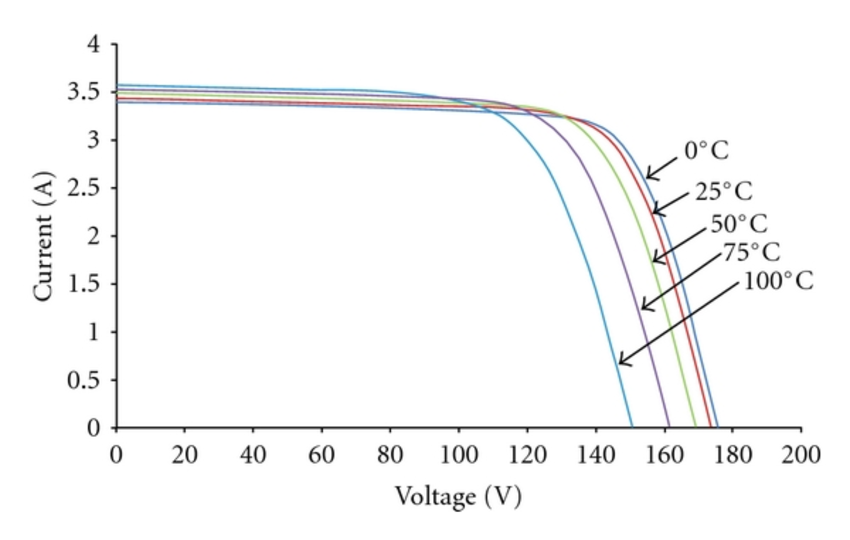Hello to everyone! I'm student at Technical University of Crete and I'm trying to model a PV Array using TRNSYS 17. In my research I'm trying to see how the PV reacts with a cool material underneath it. In this case I'm using Sikalastic 560 as a cool material. It seems that the roof temperature is being lowered due to the material's high reflexivity, so the same occurs also about the PV's temperature, but the problem is that the PV's power is also less than expected. Physics says that; hotter electrical device == less performance, cooler electrical device == better performance. In my models occurs the opposite, as the temperature of the Array is less, also the production is less. So the question is; Am I doing something wrong in the models? Am I looking the wrong perspective?
Here is the PV specs (SunPower mono-crystalline 345W SPR-X21-345)
- http://www.solardesigntool.com/components/module-panel-solar/Sunpower/2223/SPR-X21-345/specification-data-sheet.html
- https://www.renugen.co.uk/sunpower-x21-345w-345-watt-solar-panel-module/
Here is the link for there TRNSYS models
- https://www.mediafire.com/file/29xospadq5iiv88/Models.zip/file
It contains 2 folders; (1) named "Plain" with simple concrete flat rooftop and (2) named Sikalastic560 which has the model with flat rooftop but added this material on the outside roof as mass-less material (also included in this folder the Sikalstic560 layer and Sikalstic560 wall)
I also attach the .xlsx files with 2 different states of the PV; (1) resistance set to -1 and (2) resistance set to 0.5
- https://www.mediafire.com/file/gnhjuk2wvs4j8gm/compareSPWR.xlsx/file
- https://www.mediafire.com/file/ssbhvecesqmn9va/compareSPWR_resistance05.xlsx/file
As you will see in the .xlsx files I've made the diagrams for PV's temperature and PV's power (ignore Elastokryl columns). The roof temperature is less due to the material, also is less due to lower temperature of the roof, and the problem comes to surface when we see the PV's Power diagram. With the Sikalastic560 it produces less ammount of watts and I don't know why.
Could someone please help me? What I'm doing wrong with this modelling? The watts should be more due to lower temperature, right?
Thank you all for your time
Sincerely Kotenidis Konstantinos






